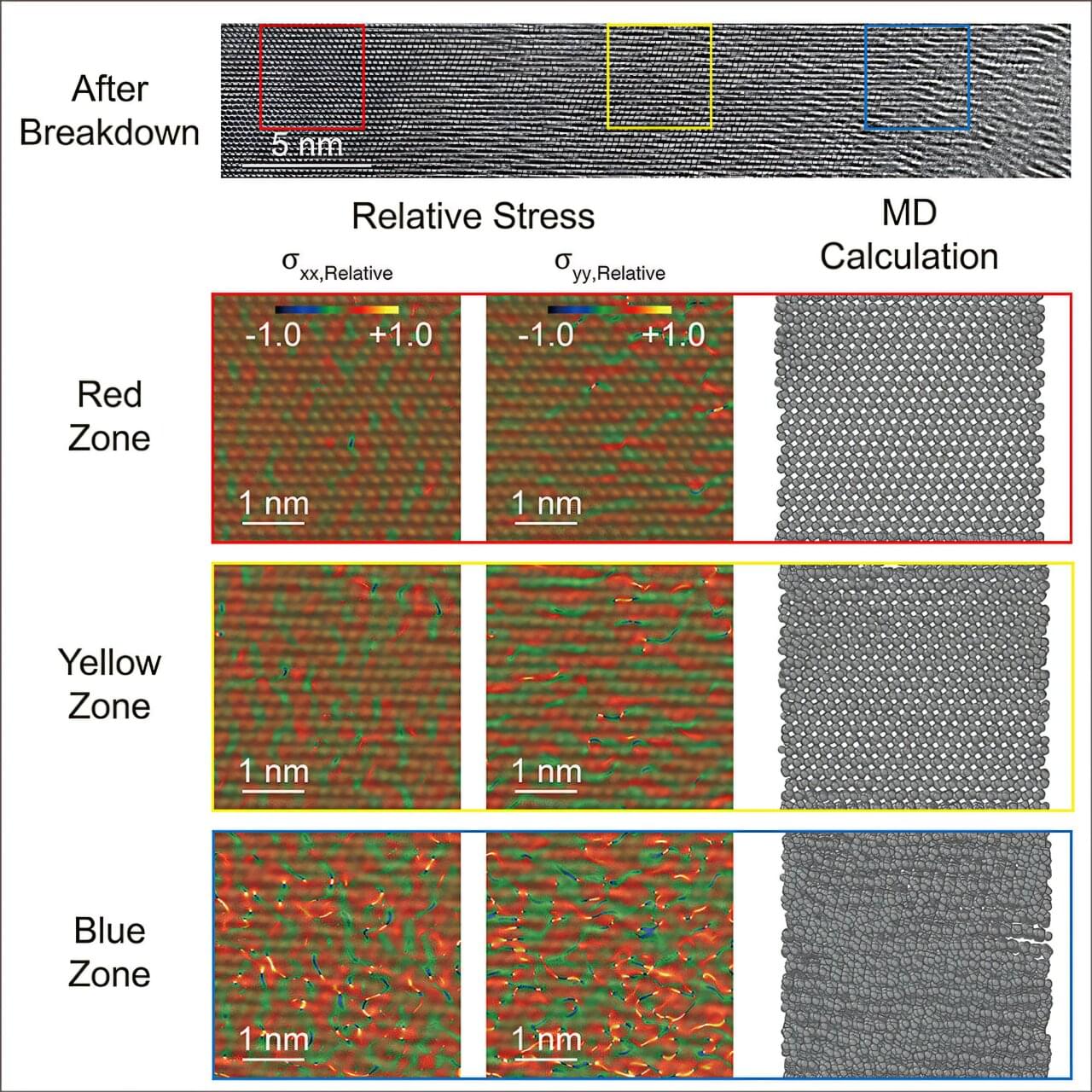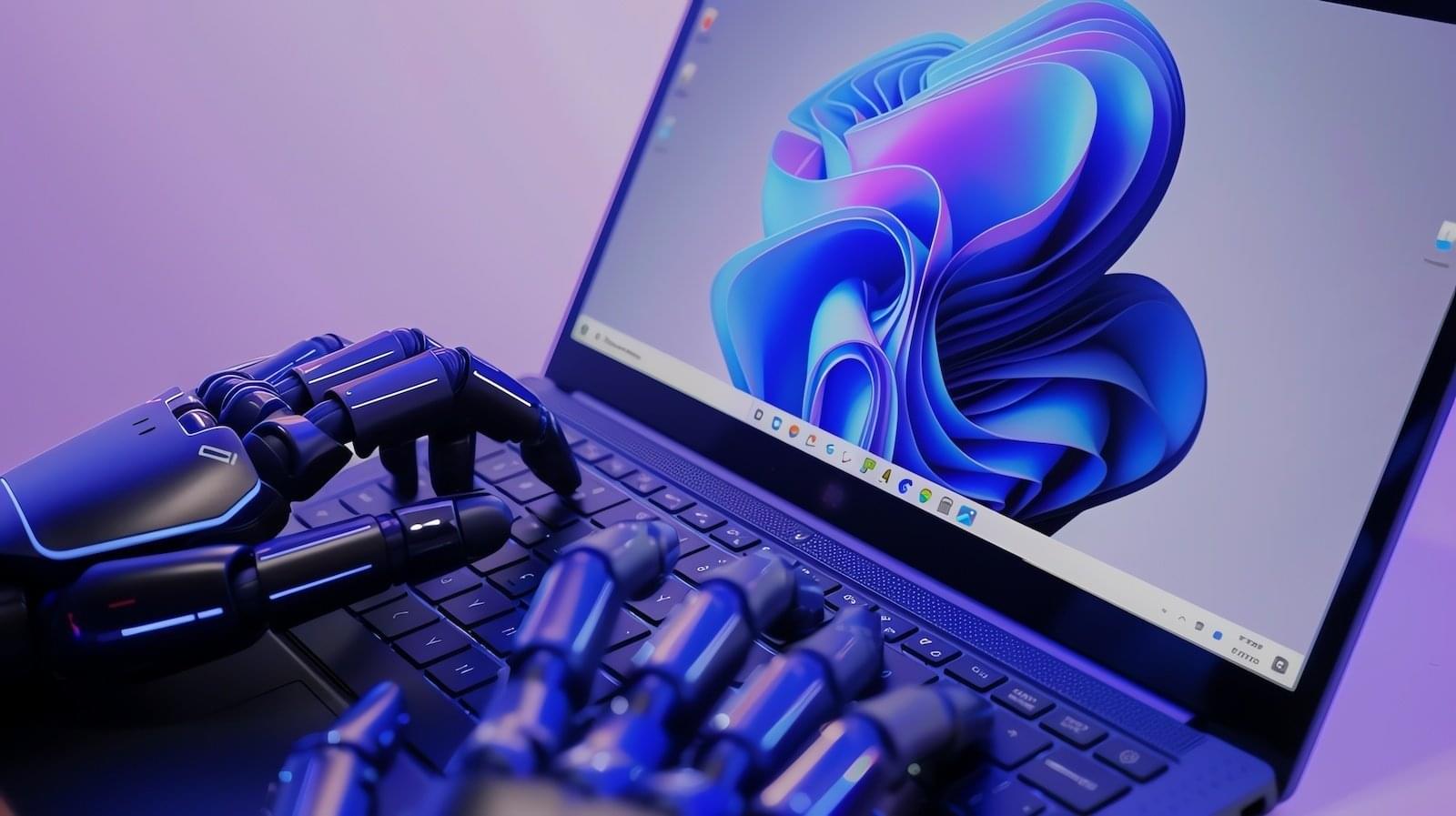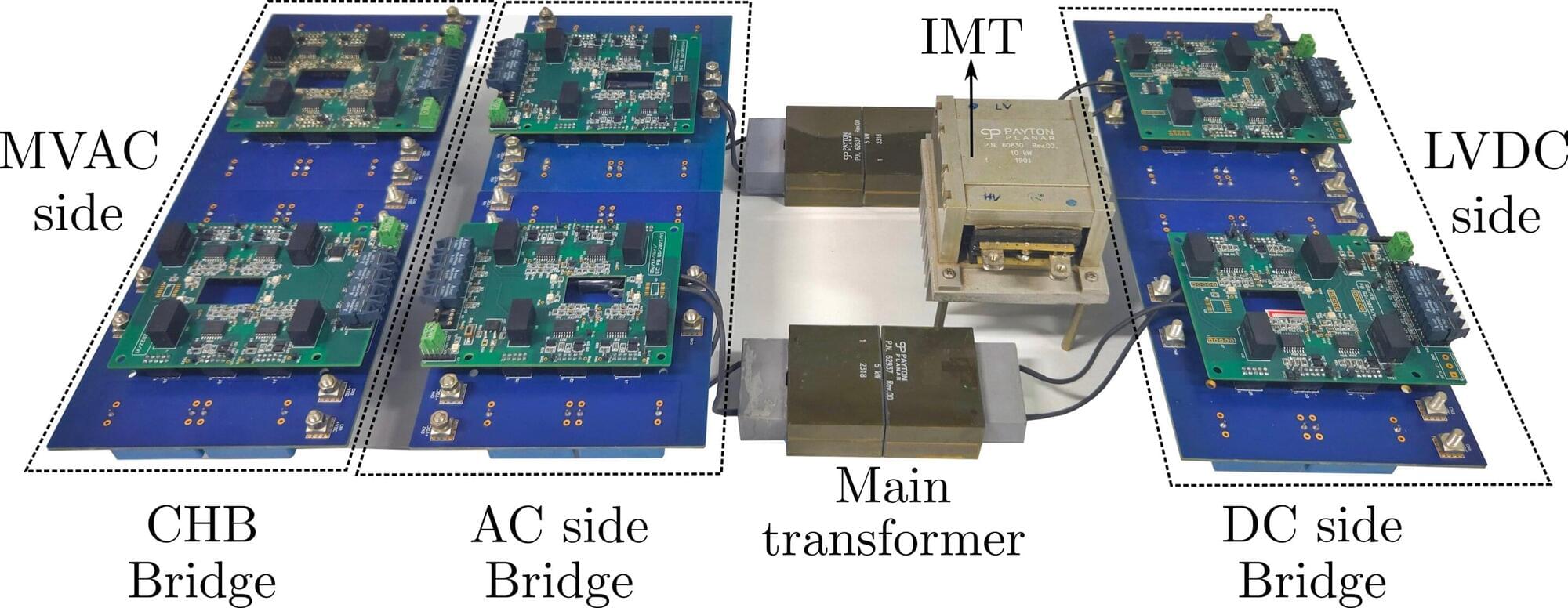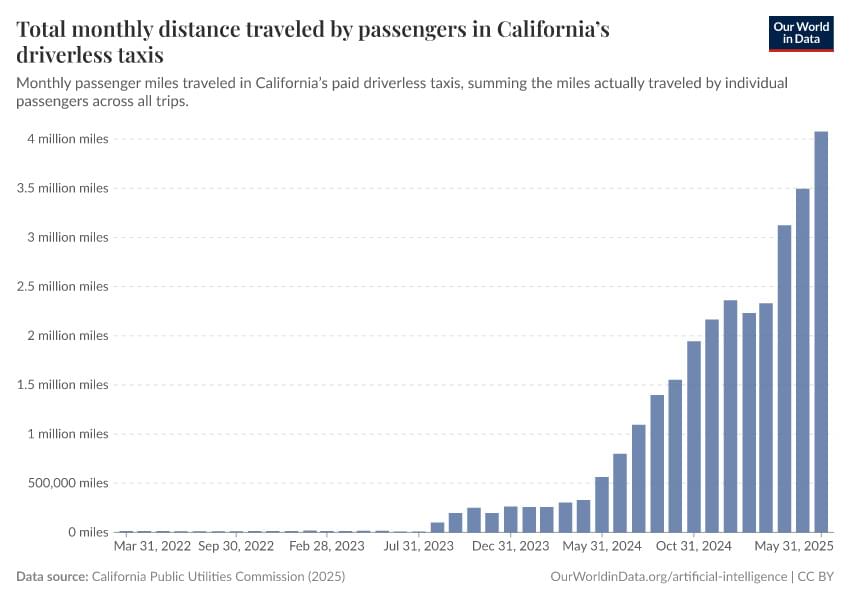A research team from the University of Chinese Academy of Sciences has revealed the failure mechanism of diamond under extreme electrical fields through in situ experiments and molecular dynamics simulations. The study, published in Cell Reports Physical Science, provides critical insights for the design of robust diamond devices.
Diamond is known for its exceptional physical properties, including ultra-high breakdown field strength and thermal conductivity, making it a promising material for high-frequency and high-power electronics. However, its failure process under extreme electrical fields has remained poorly understood before now.
Led by Profs. Yan Qingbo and Chen Guangchao, the researchers used an in situ transmission electron microscopy (TEM) method to observe the breakdown process in real time. They found that diamond failure begins preferentially along the (111) crystal plane due to stress-induced lattice distortion and subsequent amorphization, rather than transforming into graphite.






